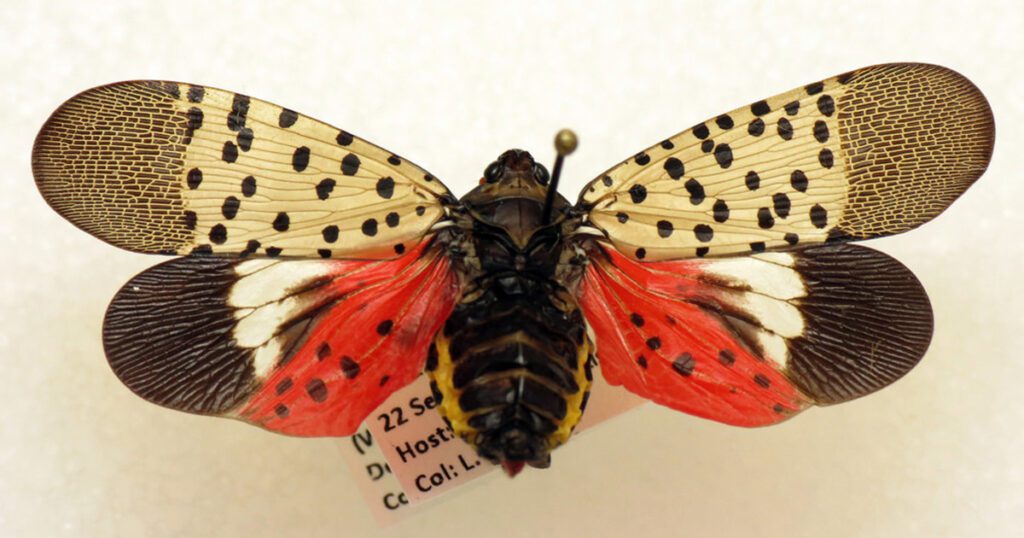
All across the Mid-Atlantic, agencies and outlets have been releasing warnings and BOLOs (Be On The Lookout) for the spotted lanternfly. The pest has rapidly spread throughout Japan, South Korea, and more recently – parts of the United States.
The Lanternfly is a showy, readily identifiable insect from the planthopper family, approximately one inch in length. They damage host plants by using their piercing mouthparts to suck sap from trunks and stems and stems. “Honeydew,” a sugary liquid, is produced by the sap they extract, which is then deposited on the surface of the plant. As the honeydew ages and ferments, it can turn into sooty mold, a dark sticky substance which can impede photosynthesis when deposited on leaves further weakening the plant. If the lanternflies are abundant enough, they can weaken a tree to the point that it may die.
This is a huge problem due to how rapidly the insect can spread egg masses and populate large regions at a time. It’s important to know what you’re looking for and how to handle the situation. If you see a spotted lanternfly – go ahead and swat it or smush it! Any way you see fit of disposing of it works. You can also keep a spray bottle of insecticidal soap handy to spray lanternflies on contact or remove clumps of egg masses from trees.
Lastly, be sure to report any sighting you have of the spotted lanternfly – from egg masses to nymphs to fully fledged adults to DC’s Urban Forestry Administration. It’s important to stay vigilant if we wish to prevent rapid spread of the insect population, not doing so could lead to disease and death for many of our Districts beautiful trees.

